Andreas Palladio
The polar star among architects

Andreas Palladio, Die Baumeisterin Pallas, Oder Der in Teutschland entstandene Palladius.
translated by Georg Andreas Böckler. Nuremberg 1698, printed by the publishing house Endter
"The polar star among architects" is what Johann Wolfgang von Goethe called the master builder Palladio. Even though the focus of his work was in the 16th century, Palladio did not gain his worldwide significance until much later. He became a role model for all those who wanted to create democratic architecture.
What do the White House in Washington, the Panthéon in Paris and the Parliament building in Vienna have in common? All of them have chosen an architectural style that gives the appearance of establishing a direct link to antiquity. Not to real antiquity, however, but to an antiquity created by an architect of the late Renaissance: Palladio's antiquity.
We have become so accustomed to these buildings that we can hardly imagine a metropolis without domes and temple facades. This essay deals with the architect who set this trend: Andreas Palladio. The MoneyMuseum was recently able to acquire a copy of the first German translation of his two books on architecture, published in 1698. This essay addresses the significance of the work: its prehistory, the book itself, and its afterlife.

Probably Palladio's most famous work: Il Redentore / Venice. Photo. Longs Peak, cc-by 3.0.
Probably Palladio's most famous work: Il Redentore / Venice. Photo. Longs Peak, cc-by 3.0.

Double page from the 1567 annotated translation to Vitruvius by Daniele Barbaro, illustrated by Palladio.
Double page from the 1567 annotated translation to Vitruvius by Daniele Barbaro, illustrated by Palladio.
Palladio: A beginning as a simple stonemason
He was born in 1508, the son of a miller, the Andrea di Pietro della Gondola we know today as Palladio. His godfather, a sculptor, made sure that his godson was also apprenticed to a sculptor. Sculptor was another word for a stonemason, for a craftsman who learned from scratch how to treat stone in order to use it to build a stone house. Stone houses were not the rule in those days, but rather the exception. Stonemasons also provided the blueprint. It was they who designed and built the great Gothic cathedrals of the Middle Ages.
The Renaissance developed a new concept of the artist. Whereas all the painters, musicians and sculptors had previously seen themselves as craftsmen who, organized in a workshop with others, carried out a precisely defined commission for a client, the humanists admired the artistic individual and his creative spirit. For them, a true artist was not simply a painter, a sculptor, a musician. He was more. Ideally, he should master all the arts.
And there was this gifted 28-year-old master stonemason from Vicenza, who in 1536 collaborated in the construction of Villa Trissino in Cricoli. He must have caught the eye of his patron, Gian Giorgio Trissino. He began to promote him systematically.
Trissino taught his stonemason mathematics and music and introduced him to the Latin classics. He even gave him a new name: Palladio, derived from the goddess of knowledge and its application: Pallas Athena.
Trissino opened his library to Palladio. He familiarized him, of course, primarily with all the books that one had to have read if one wanted to converse with humanists about the art of building. These included, first and foremost, the works of the Roman author Vitruvius. Poggio Braccionlini had found a complete copy of this work, which was so decisive for the Renaissance, in the monastery library in St. Gallen in 1416 and had taken it with him to Italy.
Vitruvius' "Ten Books on the Art of Building" had caused a great stir among the leading humanists. This was because the work contained no illustrations, which meant that anyone who wanted to build like the Romans had to figure out for themselves what that meant in practical terms. For many wanted to have buildings in the Roman style, which is already shown by the demand for printed editions of the manuscript. It first appeared in Rome in 1486.
Palladio combined two strands of knowledge in his person. He had undergone the traditional training as a stonemason and, thanks to Trissino, had trained his knowledge on the theoretical considerations of the humanists. He was a practitioner and a theorist - and mastered the art of educated conversation. In addition, he made research trips to all the known ruins of Roman buildings.
In addition to researching, drawing and measuring the buildings of Rome and the ruins of Italy, Palladio also traveled abroad. Anyone who wanted to talk to him about Roman buildings experienced a worldly and eloquent man who knew the written and archaeological sources better than anyone else - and who, moreover, was himself experienced in the techniques that had been used to construct buildings since Roman times.
No wonder that on his return home to Vicenza he won a competition to redesign a central public building. That was in 1549. This building made him famous at a stroke.
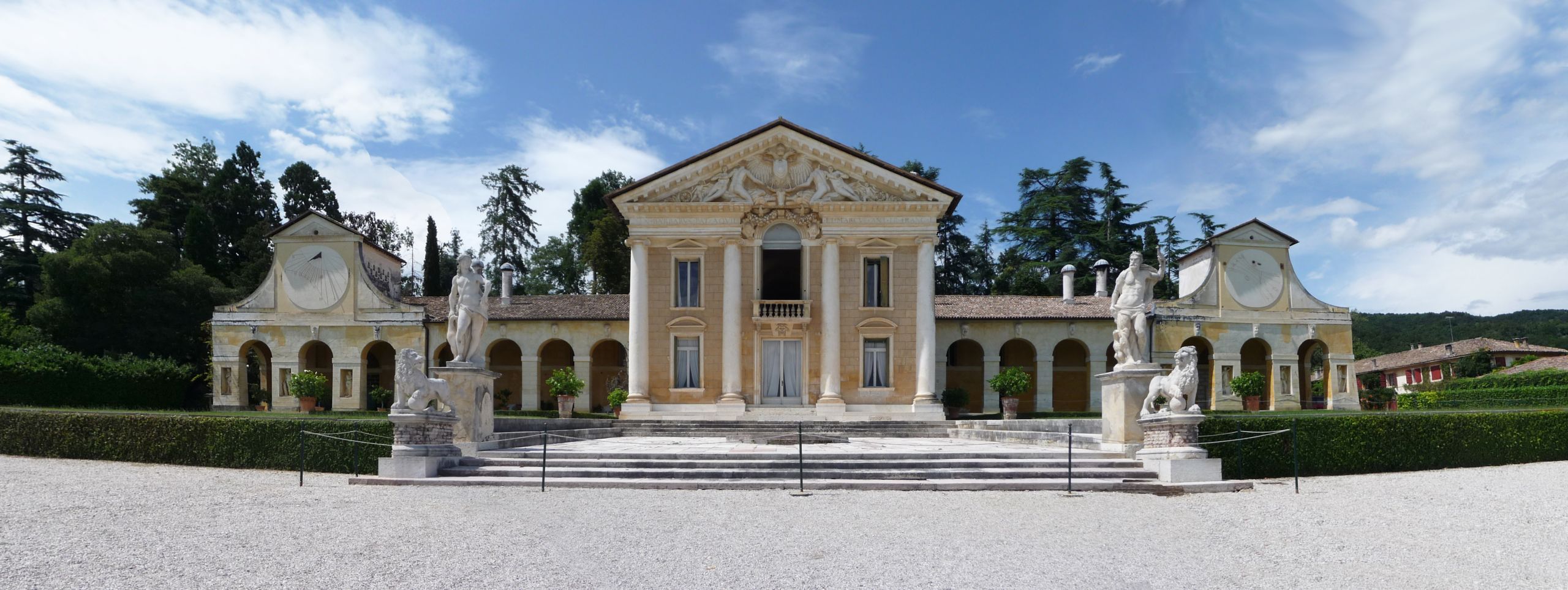
Villa Barbaro in Maser, begun around 1557. photo: Wikipedia.
Villa Barbaro in Maser, begun around 1557. photo: Wikipedia.
It is remarkable and typical of the Renaissance that Palladio, while positioning himself in his book as the heir to antiquity, shows that he is capable of constructing better buildings than his ancient predecessors. The Renaissance is precisely not a rebirth of antiquity, but an application of ancient knowledge to modern issues. Thus, although Palladio's "farms" are called "villa" like their Roman predecessors, the Latin word for village, town, official house and country house - especially in late antiquity it was used for the self-sufficient village community around the main house of an owner and patron - the architect turned the Roman villa into something completely new, a building type from which our modern villa, a detached single-family house, developed.
Palladio's four books gained an incredible international reputation over the art of building . In fact, they became not only a bestseller, but also a longseller - at home and abroad: there were new editions in Italian in 1581, 1601, 1616 and 1642. In 1625 the first book was translated into Spanish, in 1646 all books were translated into Dutch, and in 1650 into French. The book that the MoneyMuseum was recently able to acquire is the first translation into German, which appeared in 1698, well over a century after Palladio's death.
The Book
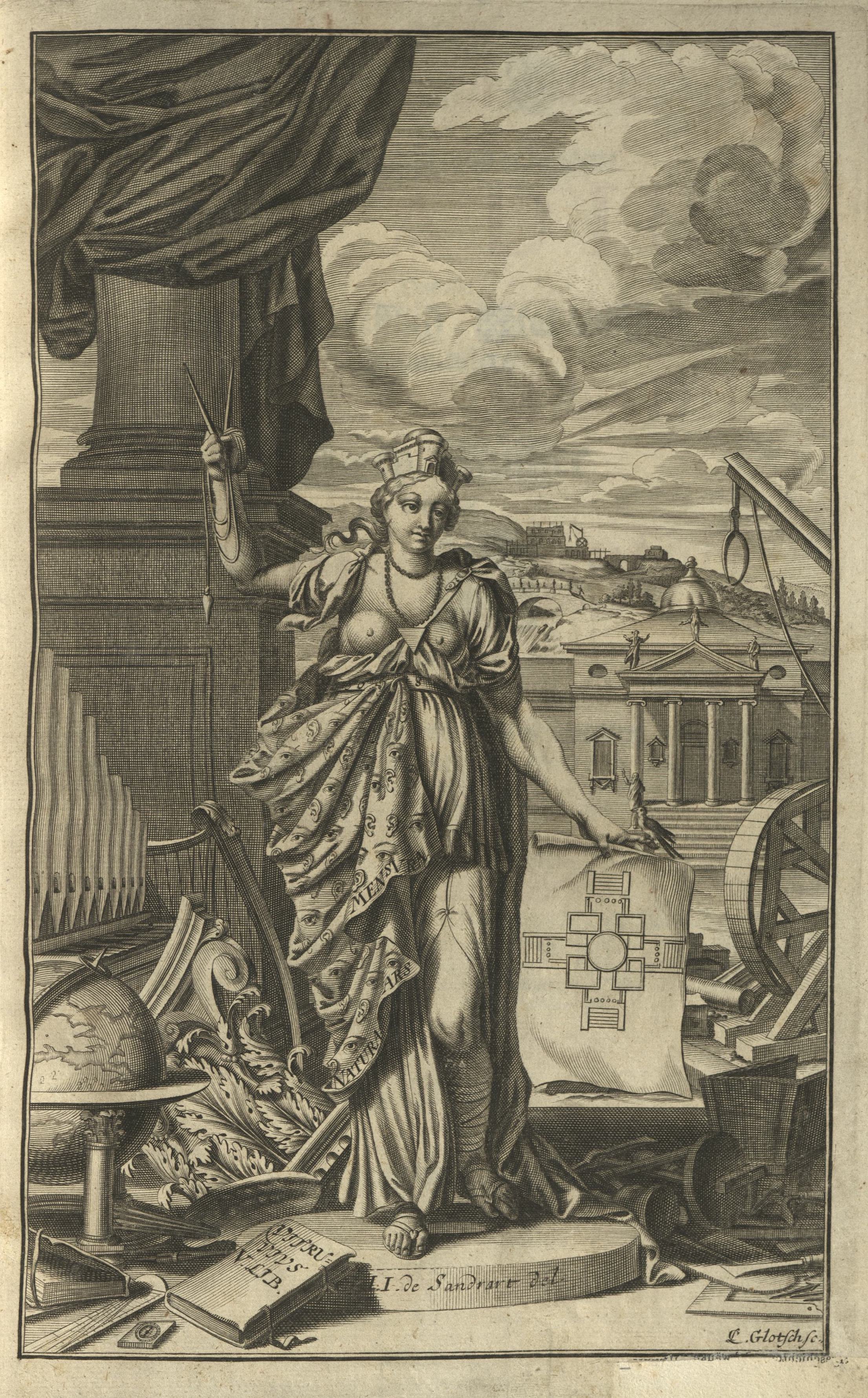
Frontispiece of the book: The art of building as the queen of all arts.
Frontispiece of the book: The art of building as the queen of all arts.
Especially useful for the architect and his craftsmen is not the text, but the many illustrations. Each building element is labeled with precise information about the proportions. Palladio does not bother with exact measurements, but gives the proportions. If you adopt his proportions for the individual parts, you get a harmonious whole. Thus, any builder can reproduce any component drawn by Palladio in the size he desires.
Whether top or side view, it is obvious from the sketches how much experience Palladio must have had in explaining to his staff how to implement his specifications for the architectural details of a building.
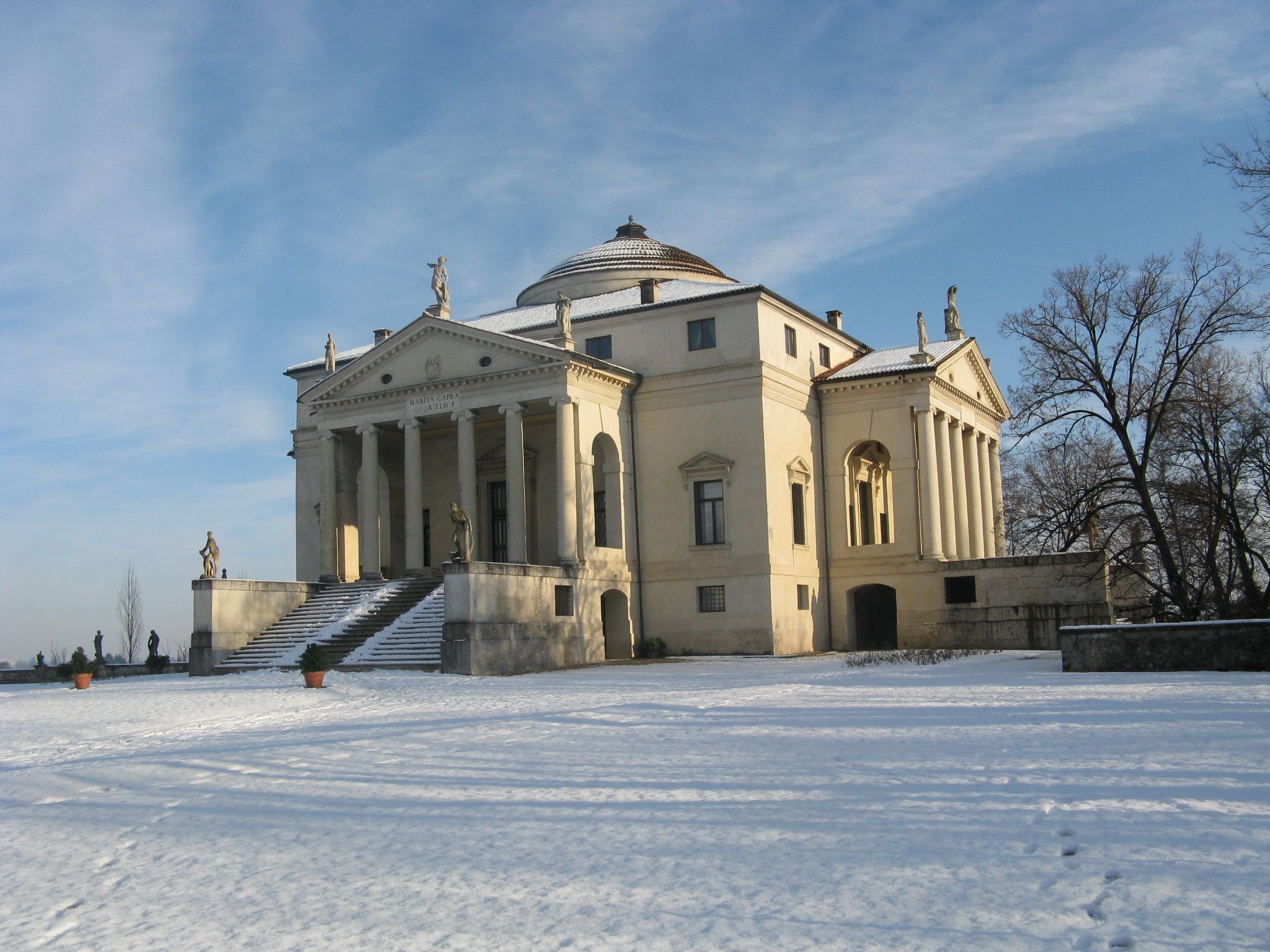
La Rotonda in the snow. Photo: GDelhey, cc-by 3.0.
La Rotonda in the snow. Photo: GDelhey, cc-by 3.0.
Let's close the look at Palladio's designs in his second book of architecture with his most famous villa: La Rotonda. Beautifully situated on a hill, the building offered its inhabitants a magnificent panoramic view of the countryside. It was built between 1567 and 1571 for a high clergyman and was considered the pinnacle of beauty. Many visitors were so enthralled that they had it replicated in their homeland. We know of five imitations from Great Britain and others from France, Germany and Poland. The most famous of them is in the United States of America. Thomas Jefferson, third president of the young state in the New World, designed the Monticello mansion himself. He used the design of Palladio's Villa Rotonda for it.
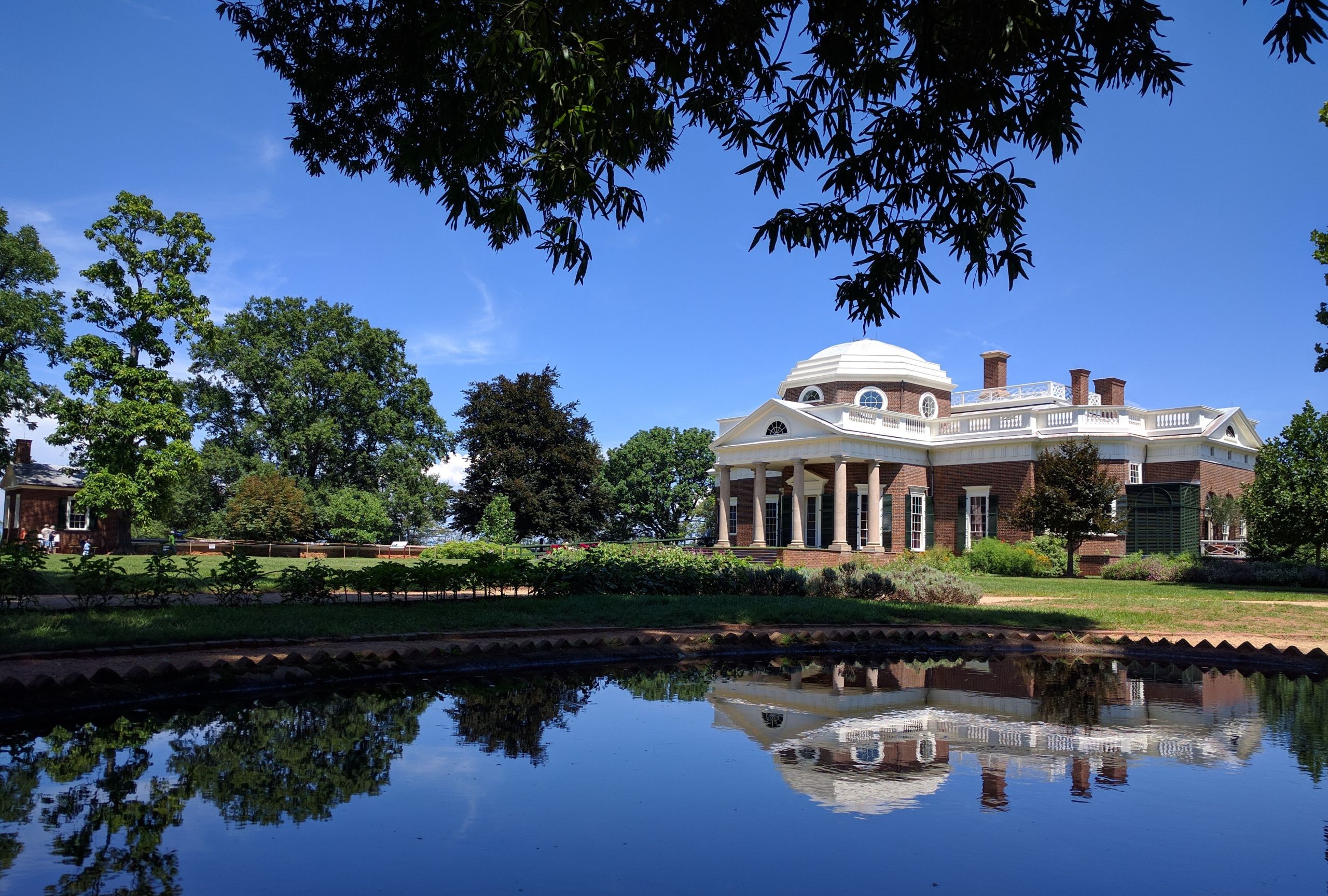
Monticello in Charlottesville / Virginia. Foto: Xiaorui Du, cc-by 4.0.
Monticello in Charlottesville / Virginia. Foto: Xiaorui Du, cc-by 4.0.
This was not a matter of taste, by the way, but a political statement. At the time of Jefferson, Palladio was already the hip role model of all those who were enthusiastic about freedom and equality and democracy.

While columns were used in antiquity primarily in temple construction, Palladio introduces the column as an architectural component for all types of buildings.
While columns were used in antiquity primarily in temple construction, Palladio introduces the column as an architectural component for all types of buildings.
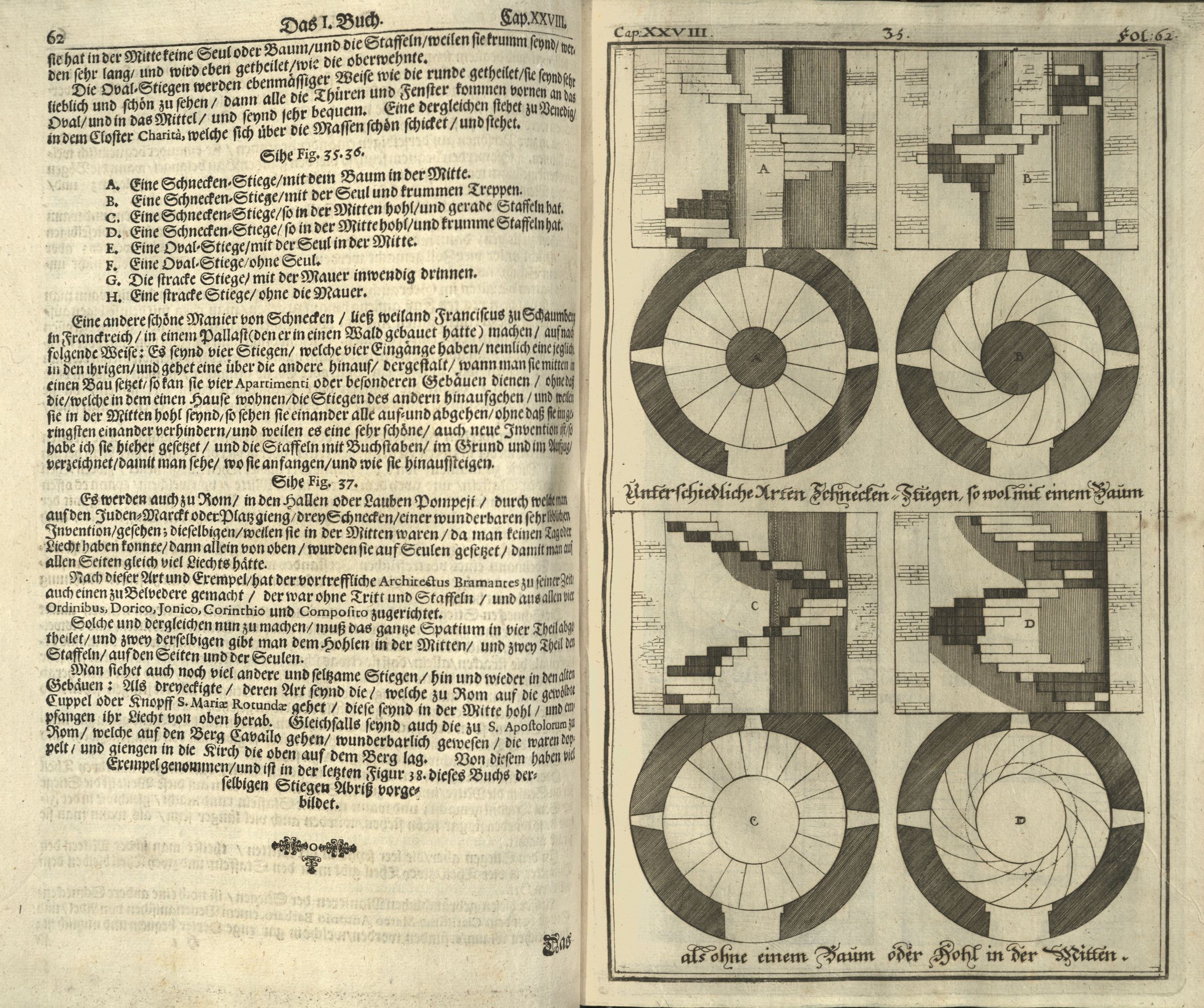
The intricate art of the staircase.
The intricate art of the staircase.
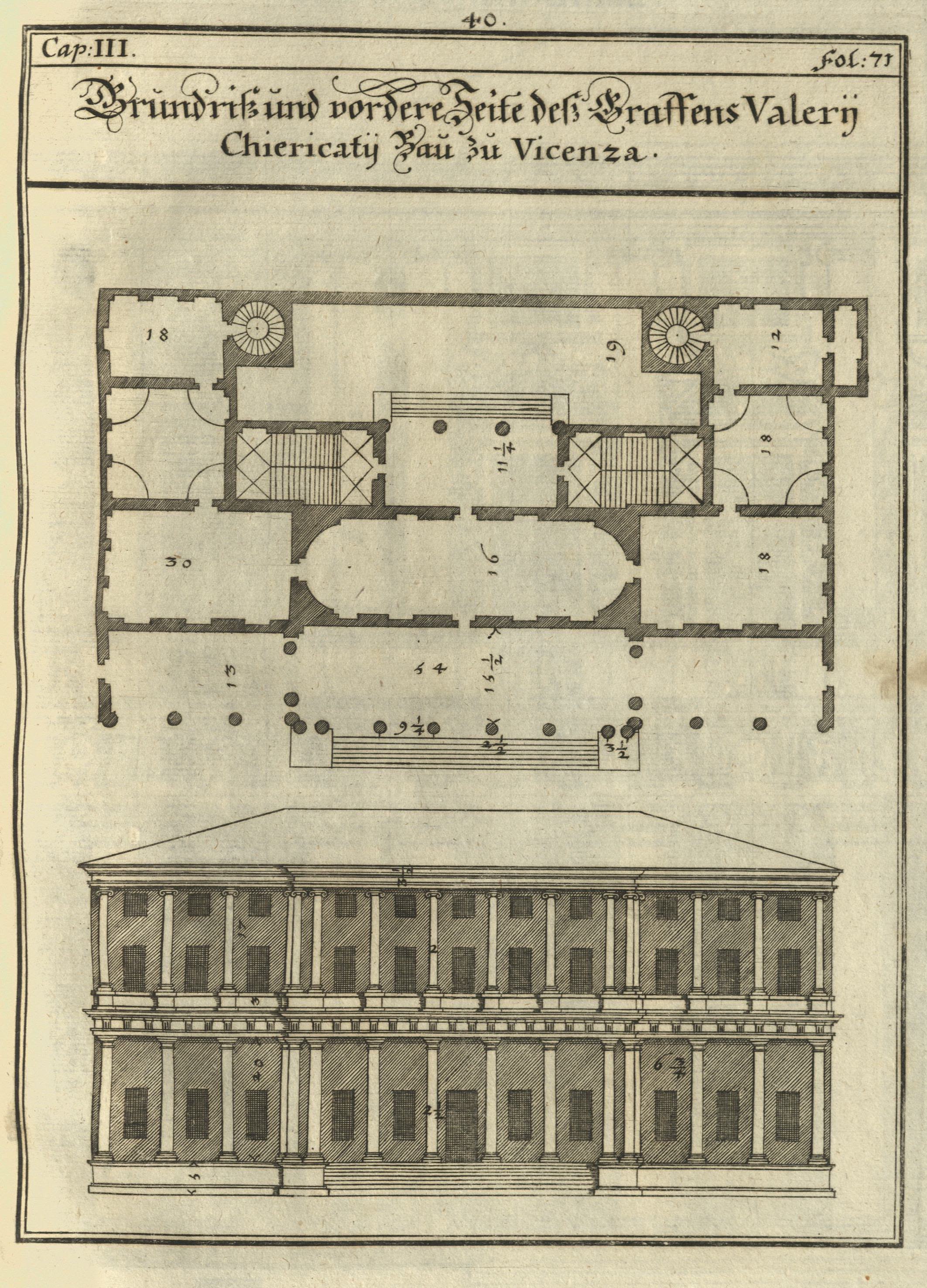
Part of the first plan to a city palace.
Part of the first plan to a city palace.

Entrance area of the City Palace.
Entrance area of the City Palace.
Pallianism
Anyone who was anyone in the early modern era, whether a nobleman or a wealthy merchant, sent his sons on the Grand Tour. The Grand Tour was something quite different from our modern educational journey.
Venice was an integral part of every Grand Tour. If only because its entertainment program was so well known that no young man would want to miss it. Palladio's buildings therefore possessed what we would today call "the best location". They were simply passed by by a great many future builders.
One of them was Thomas Howard, 21st Earl of Arundel. The art-obsessed man had the then already quite successful architect Inigo Jones in his entourage. He was enthusiastic about Palladio and built countless palaces and mansions in his style after his return in 1614 until his dismissal under Cromwell in 1642. Inigo Jones found many imitators, so that a style inspired by Palladio developed in England, which art historians call Palladianism.
Palladianism was so popular in the second half of the 17th century that London, rebuilt after the fire of 1666, was reminiscent of Palladio everywhere. Palladio may even have inspired Christopher Wren to design the dome of St. Paul's Cathedral and its temple-style entrance. Wren had at his disposal the version of Palladio's first book of architecture, first translated into English in 1663. That the Italian architect retained his influence in the early 18th century is evident from the fact that the entire work was translated into English in 1715 - including the books on town planning and church building.

Capitol in Washington. Foto: Martin Falbisoner, cc-by 3.0.
Capitol in Washington. Foto: Martin Falbisoner, cc-by 3.0.
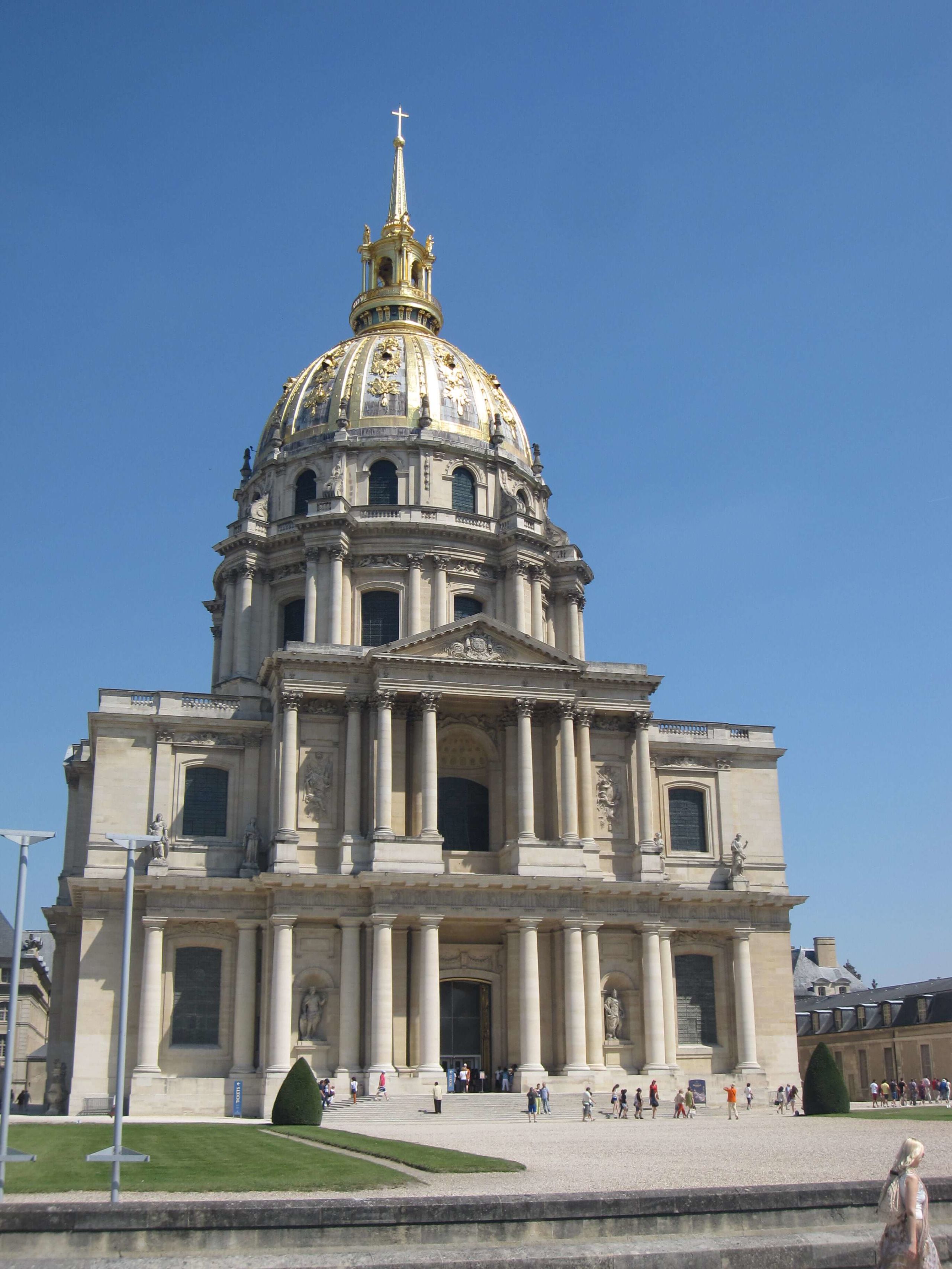
Invalides Cathedral in Paris. Photo: KW.
Invalides Cathedral in Paris. Photo: KW.
Symbols of freedom
While the French kings built their palaces in lavish Baroque and Rococo styles, the British preferred simple buildings whose ground plans seemed to come straight from antiquity via Palladio. They were based on symmetry and clear forms that were easy to calculate with the help of mathematics.
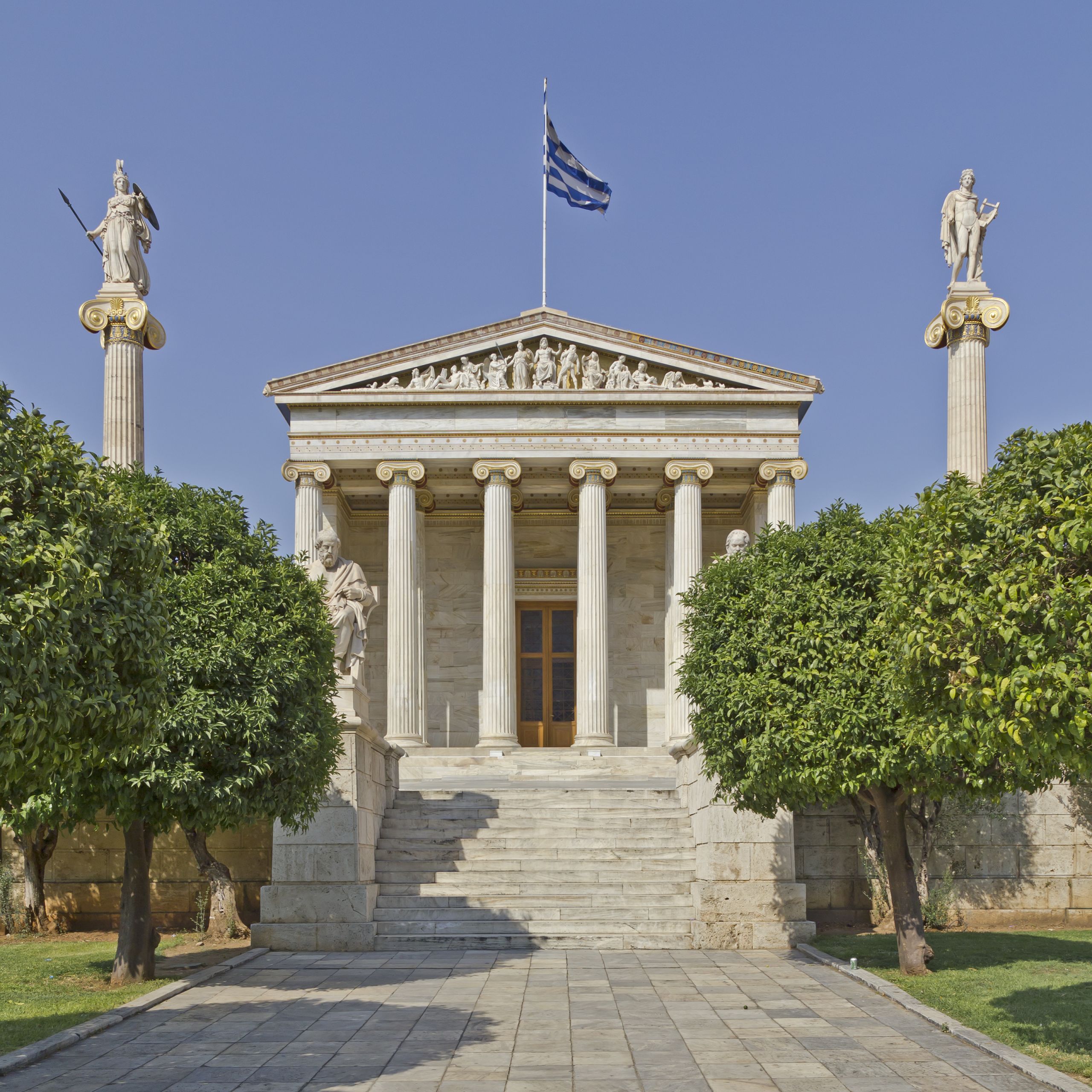
Academy of Athens, built in 1856 by Theophil von Hansen. Photo: A. Savin, cc-by-sa 3.0.
Academy of Athens, built in 1856 by Theophil von Hansen. Photo: A. Savin, cc-by-sa 3.0.
Clarity, mathematics - of course, this architectural style attracted the attention of the Enlightenment thinkers. Palladio's stylistic features experienced their great triumph during Classicism, when no revolutionary building, no temple of the people could do without an ornamental columned facade and impressive dome. Palladio's stylistic features took on such a life of their own that no one thought of Palladio when they saw them.
When we visit the Acropolis today, drastically restored in the 19th century, we should not forget that we are not looking at a purely genuine ancient building complex, but at a space created by architects at the same time as the classical buildings of the city. Our ideas about ancient architecture are based less on the latest findings of archaeology than on the ideas developed by a simple stonemason who was lucky enough to build and publish in the right place at the right time.
It is impossible to imagine our collective visual habits without Palladio's wealth of forms.
You can download the complete German translation of Palladio's book via this link. (220mb)